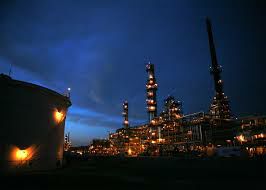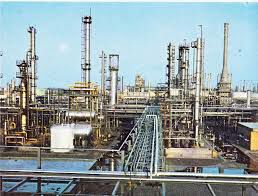Immediate Background to the Nationalisation of the Anglo-Iranian Oil Company’s Crisis: Britain and Iran
On May 28th 1901, William Knox D’Arcy, an Englishman who as a boy had emigrated to Australia with his father, made a fortune there and returned to Britain, entered into agreement with the Persian Government to exploit Persian oil. In 1909 the Anglo-Persian Oil Company (APOC) was formed, having since 1914 the British Government as a major shareholder, with 55% of the shares, and 52% of the voting rights. The Anglo-Persian Oil Company was the most important British enterprise abroad, and the major British interest in the Persian Gulf.
It was Churchill who played a major role in conversion of the Royal Navy from coal to oil. Moreover Churchill had a crucial part in the British Government’s buying of a majority of shares in the Anglo-Persian Company.
By far politically the most significant country of the Persian Gulf zone was Iran.11 She was the most populous state in the region and a constitutional monarchy. Rich in natural resources, over twice the size of France, and the second oldest continuous civilisation in the world, with a long imperial past; Iran became the ‘jewel’ in the crown of the British petroleum industry.
During the Second World War the Anglo-Iranian Oil Company played an important role. After Japan attacked the USA on 7th December 1941 and went on to overrun most of southeast Asia, the Anglo-Iranian Oil Company became the major source of petroleum products to sustain the Allied war effort in India and the Pacific. In 1945, oil production in Iran was 19.2 million tons, well above the pre-war peak of 10.2 million tons.12
After the Second World War criticism of the Iranian share of the Anglo-Iranian Oil Company emerged, and demand for the nationalisation of the company began to grow in Iran. Post-war oil production in Iran had been moving up, from 19.2 million tons in 1945 to nearly 20.2 million in 1946 and on its way towards 24.9 million in 1947. The Anglo-Iranian Oil Company was hesitant about how far it could safely go to improve the level of payments to Iran.13
Venezuela had negotiated an oil concession agreement giving it a 50:50 share in profits, and the Iranians saw no reason why they should not have the same. Furthermore, gold price was used to calculate the Anglo-Iranian Oil Company’s tonnage royalties. The market value of gold was much higher in the bazaars of Teheran than in New York or London. The Iranians felt they were being cheated, both over their royalty income and over their dividend-related receipt. The Iranian economy was under considerable pressure. A Seven-Year Plan had been drawn up for the period 1949-1956, and royalties were the only conceivable way to finance it. The plan was a long-term programme, providing for heavy expenditure on infrastructure and on social improvement, for example, in education. It was therefore not likely to produce short-term economic gains, but these were just what the Iranian people, and most likely the Iranian parliament or the Majlis, expected from it. The final blow came when the Arabian-American Oil Company (ARAMCO) reached a 50:50 profit-sharing agreement with the Saudi Government, which was announced in December 1950. On 20th March 1951 the Majlis approved a recommendation from the Oil Committee for the nationalisation of the Anglo-Iranian Oil Company; on 28th April it passed a bill to implement this nationalisation.14
- By order of the Shah, Persia became officially known as Iran from 1935 onwards. The name of the Anglo-Persian Oil Company (APOC) was also changed to the Anglo-Iranian Oil Company (AIOC).
- J.MARLOW, The Persian Gulf in the Twentieth Century, (London: The Cresset Press, 1962), Chapter 10.
- Ibid., Chapter 9, 10, 12, 13.
- Ibid.



